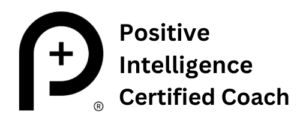 “A new study has found that participating in an 8-week meditation training program can have measurable effects on how the brain functions even when someone is not actively meditating.” Massachusetts General Hospital, November 12, 2012
“A new study has found that participating in an 8-week meditation training program can have measurable effects on how the brain functions even when someone is not actively meditating.” Massachusetts General Hospital, November 12, 2012
I used to love writing research papers. Well, maybe not love, but I was pretty good at it. I’d get information from dozens of sources, grab interesting snippets of information here and there, add a compelling quote or two, throw in a current media reference for pizzazz (see above).
I’ve been trying to learn how to meditate the same way. I’ve read a few books on the how-to’s of different types of meditation, listened to guided meditations on cds and iPhone apps, and incorporated the Dalai Lama’s recommendations after hearing him speak. I’ve googled “how to meditate” and followed the topic on Twitter.
My head is so stuffed with meditation information that I can barely hear myself breathe.
What the Experts Tell You Not to Do
Even with so many meditation teachers out there expounding different approaches and techniques, they all agree on three things that don’t work:
1) Don’t meditate sporadically.
2) Don’t beat up on yourself when your mind wanders.
3) Don’t rely solely on books and other written (or taped) sources to learn to meditate.
Having now violated each of these admonitions, I have come to understand their merits.
Why Nike’s “Every Damn Day” Slogan Applies to Meditating
When I started reading Sakyong Mipham’s Running with the Mind of Meditation: Lessons for Training Body and Mind, I was just embarking on my meditation journey. I had the meditation bench, which made sitting for longer stretches much more comfortable, and I had my daily priorities spreadsheet, which motivated me to fit meditation into my morning routine.
Over the course of a month, I managed to meditate 27 out of 30 days, averaging 30 minutes each time. Just like with running, it took some training to work up to 30 minutes. It really did get easier with regular practice.
But the opposite is also true. Just like with running, if you stop training your mind, progress slips away. Over the past couple of weeks, I’ve skipped a day here and there, and even went two days in a row without meditating this past weekend. (I wonder if Buddhist monks are ever stuck in hotel rooms with teenage boys during soccer tournaments.) I got back on the wagon this morning, though, and already feel better.
Why You Shouldn’t Scold Yourself if You Catch Your Mind Wandering
Matthieu Ricard, a Buddhist monk who took part in the University of Madison, Wisconsin’s famous study of long-term meditators’ intensified brain activity, helped me stop getting down on myself when my focus falters during a meditation session.
In his book Why Meditate: Working With Thoughts and Emotions, Ricard writes:
“Sooner or later, you will wander into a state of distraction accompanied by a lot of thoughts, or into a vague sleepy state, or even a combination of both–that is, into a state of confusion marked by erratic thought associations. It is at this point that vigilance has to be applied. As soon as you notice that you have lost your concentration, just resume it without adding to your distraction by feeling regret or guilt. Noticing that you have been distracted already marks the return of your mindfulness. Just come back to the breath, like a butterfly coming back to a flower after having fluttered around here and there for no apparent reason.”
That takes the pressure off, because my butterfly is a-fluttering these days.
Why DIY Has Run Its Course
The Dalai Lama said something along the lines of “Westerners want their enlightenment fast, and they want it cheap.” I’m paraphrasing, but that’s the gist of it.
I am definitely guilty of going for the budget enlightenment package. But I’ve come to realize that the experts are right. I need to shell out a few bucks to have a live person answer questions like these:
Is it OK to have the candle flame be the object of awareness for half of my mediation, and my breath be the object for the other half of the session (with my eyes closed)? Can I go back and forth?
Is it OK to mix mindfulness meditation and compassion meditation techniques in one session?
If I’m having a hot flash, is it OK to adjust my clothes? (Probably not.)
They say to rest your tongue against your top front teeth and have your lips open a little. I can only breath through my nose that way. Is that OK?
They say your back should be straight like “a stack of gold coins.” Is my back like that?
Let me know if you have questions you’d like me to ask my still yet-to-be-identified meditation teacher. Or maybe you can answer the questions above already!


